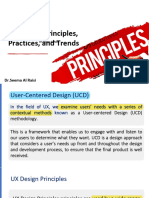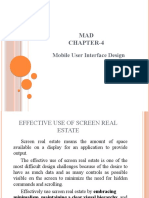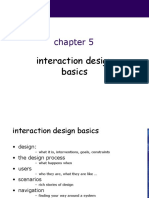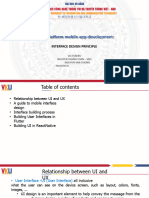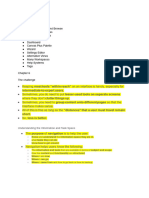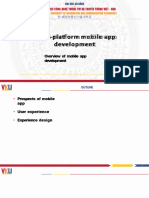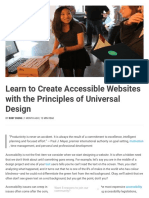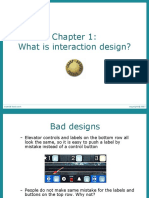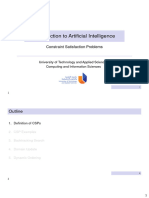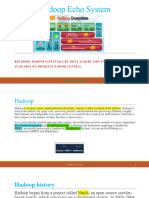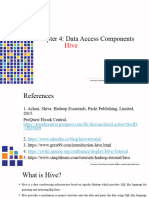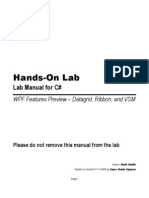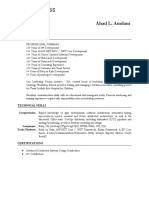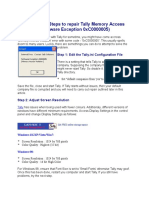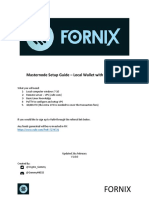0% found this document useful (0 votes)
57 views19 pagesS4 Chapter2 (4CS)
The document discusses considerations for designing experiences that work across multiple platforms or devices. It covers adjusting designs for different screen sizes and interaction methods, organizing content for portrait and landscape orientations, prioritizing functionality, and optimizing for mobile internet access and load times.
Uploaded by
lamisaldhamri237Copyright
© © All Rights Reserved
We take content rights seriously. If you suspect this is your content, claim it here.
Available Formats
Download as PDF, TXT or read online on Scribd
0% found this document useful (0 votes)
57 views19 pagesS4 Chapter2 (4CS)
The document discusses considerations for designing experiences that work across multiple platforms or devices. It covers adjusting designs for different screen sizes and interaction methods, organizing content for portrait and landscape orientations, prioritizing functionality, and optimizing for mobile internet access and load times.
Uploaded by
lamisaldhamri237Copyright
© © All Rights Reserved
We take content rights seriously. If you suspect this is your content, claim it here.
Available Formats
Download as PDF, TXT or read online on Scribd
/ 19








